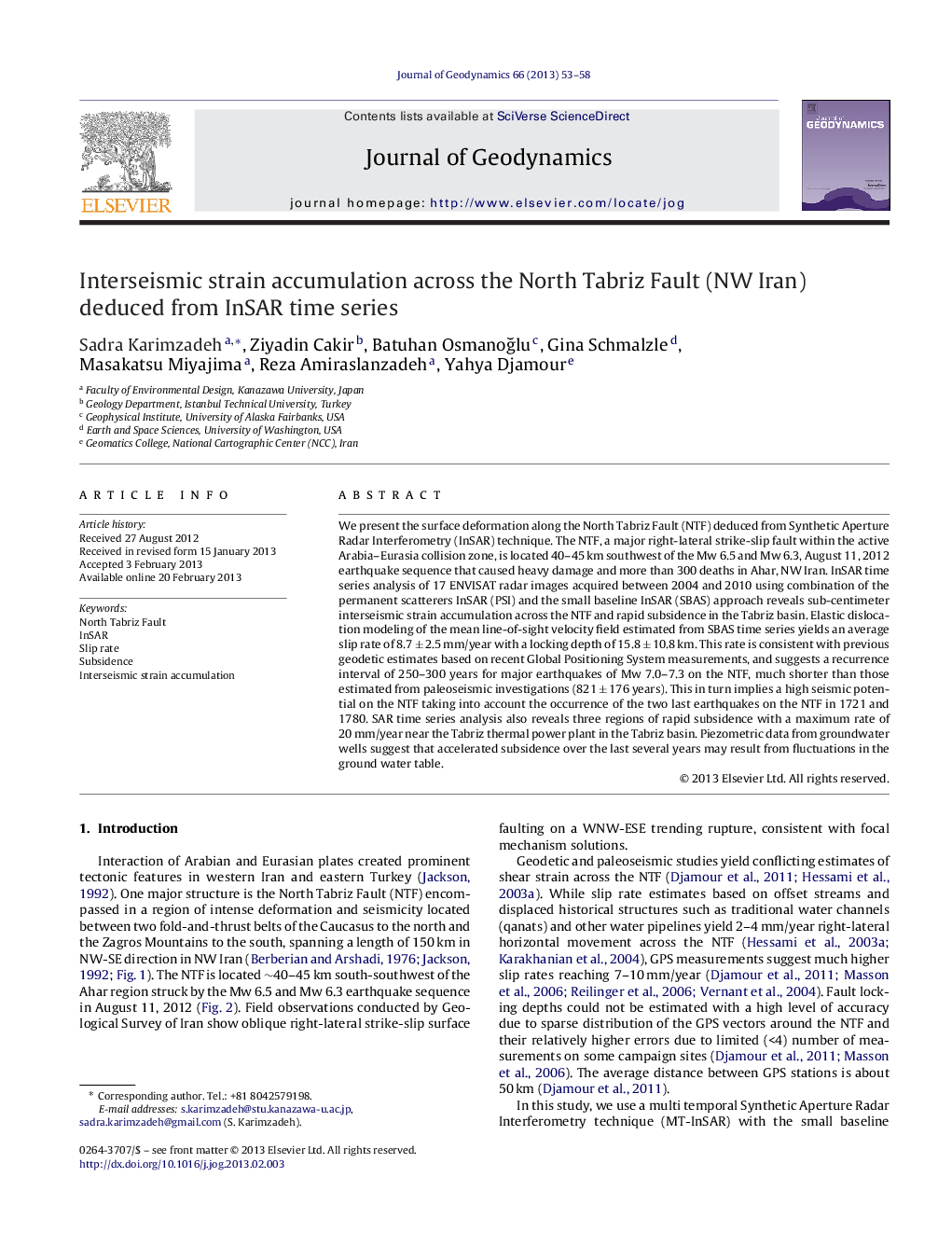| کد مقاله | کد نشریه | سال انتشار | مقاله انگلیسی | نسخه تمام متن |
|---|---|---|---|---|
| 4688222 | 1635783 | 2013 | 6 صفحه PDF | دانلود رایگان |

We present the surface deformation along the North Tabriz Fault (NTF) deduced from Synthetic Aperture Radar Interferometry (InSAR) technique. The NTF, a major right-lateral strike-slip fault within the active Arabia–Eurasia collision zone, is located 40–45 km southwest of the Mw 6.5 and Mw 6.3, August 11, 2012 earthquake sequence that caused heavy damage and more than 300 deaths in Ahar, NW Iran. InSAR time series analysis of 17 ENVISAT radar images acquired between 2004 and 2010 using combination of the permanent scatterers InSAR (PSI) and the small baseline InSAR (SBAS) approach reveals sub-centimeter interseismic strain accumulation across the NTF and rapid subsidence in the Tabriz basin. Elastic dislocation modeling of the mean line-of-sight velocity field estimated from SBAS time series yields an average slip rate of 8.7 ± 2.5 mm/year with a locking depth of 15.8 ± 10.8 km. This rate is consistent with previous geodetic estimates based on recent Global Positioning System measurements, and suggests a recurrence interval of 250–300 years for major earthquakes of Mw 7.0–7.3 on the NTF, much shorter than those estimated from paleoseismic investigations (821 ± 176 years). This in turn implies a high seismic potential on the NTF taking into account the occurrence of the two last earthquakes on the NTF in 1721 and 1780. SAR time series analysis also reveals three regions of rapid subsidence with a maximum rate of 20 mm/year near the Tabriz thermal power plant in the Tabriz basin. Piezometric data from groundwater wells suggest that accelerated subsidence over the last several years may result from fluctuations in the ground water table.
► Analysis of InSAR time series indicates that the North Tabriz Fault has a slip rate of 8.7 ± 2.5 mm per year.
► Recurrence interval of large earthquakes (Mw > 7) on the North Tabriz Fault is estimated to be about 250–300 years, two three times shorter than paleoseismic estimates.
► This recurrence interval together with the historical seismicity suggests high seismic hazard for the city of Tabriz.
► InSAR results reveal rapid subsidence in the Tabriz basin near important structures.
Journal: Journal of Geodynamics - Volume 66, May 2013, Pages 53–58